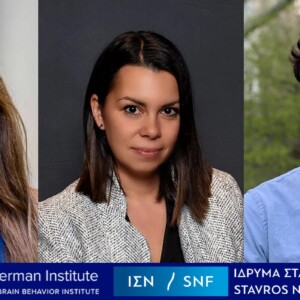
Applied Mathematics Colloquium with Samuli Siltanen, Univ Helsinki
Speaker: Samuli Siltanen, University of Helsinki
Title: CT scans without X-rays: parallel-beam imaging from nonlinear current flows
Abstract: X-ray tomography (CT) and Electrical Impedance Tomography (EIT) are two fundamental inverse problems.
CT is based on recording X-ray data of the patient along several angles of view. Image reconstruction is geometrically straightforward, linear, and only mildly ill-posed. However, as a downside the patient is exposed to ionising radiation.
In EIT, the patient is probed with harmless electric currents, and the resulting voltages are measured. The mathematical model of EIT is the inverse conductivity problem [Calderón 1980]. The currents travel along curved paths, determined by the unknown conductivity distribution, so image reconstruction in EIT is nonlinear. Moreover, EIT is very ill-posed, demanding a high level of regularization against measurement noise and modelling errors.
A fundamental connection between EIT and CT was found in [Greenleaf et al. 2018] by using microlocal analysis. There, it was shown that a one-dimensional Fourier transform applied to the spectral parameter of Complex Geometric Optics (CGO) solutions produces virtual X-ray projections, enabling a novel filtered back-projection type nonlinear reconstruction algorithm for EIT. Note that there are no actual X-rays; the measurements are current-to-voltage data collected with electrodes.
The above analysis paves the way for a novel decomposition of the EIT inverse problem. It turns out that all ill-posedness of EIT can be confined into two linear steps in the decomposition. The other one is classical Radon inversion of parallel-beam CT and thus only mildly ill-posed. The other is a collection of one-dimensional deconvolutions with a known Gaussian kernel (a third fundamental inverse problems appears!), which is highly ill-posed. The new approach to EIT, called Virtual Hybrid Parallel Tomography (VHPT), offers unprecedented reconstruction strategies for EIT, including maximally interpretable ways of including machine learning to sub-problems.
Bio: I am a Finnish mathematician mainly interested in inverse problems of medical imaging. My favorite math topics are Electrical Impedance Tomography and X-ray tomography. I am passionate about popularization of science, publishing videos on two YouTube channels: Professor Sam and Samun tiedekanava. I work as Professor of Industrial Mathematics at the Department of Mathematics and Statistics of University of Helsinki and as team leader in the Finnish Center of Excellence in Inverse Problems Research. Also, I serve as Vice Dean at the UH Faculty of Science and Treasurer of European Mathematical Society.
This talk will be offered in a hybrid format. If you wish to participate remotely, please send an email to cr2090@columbia.edu.




